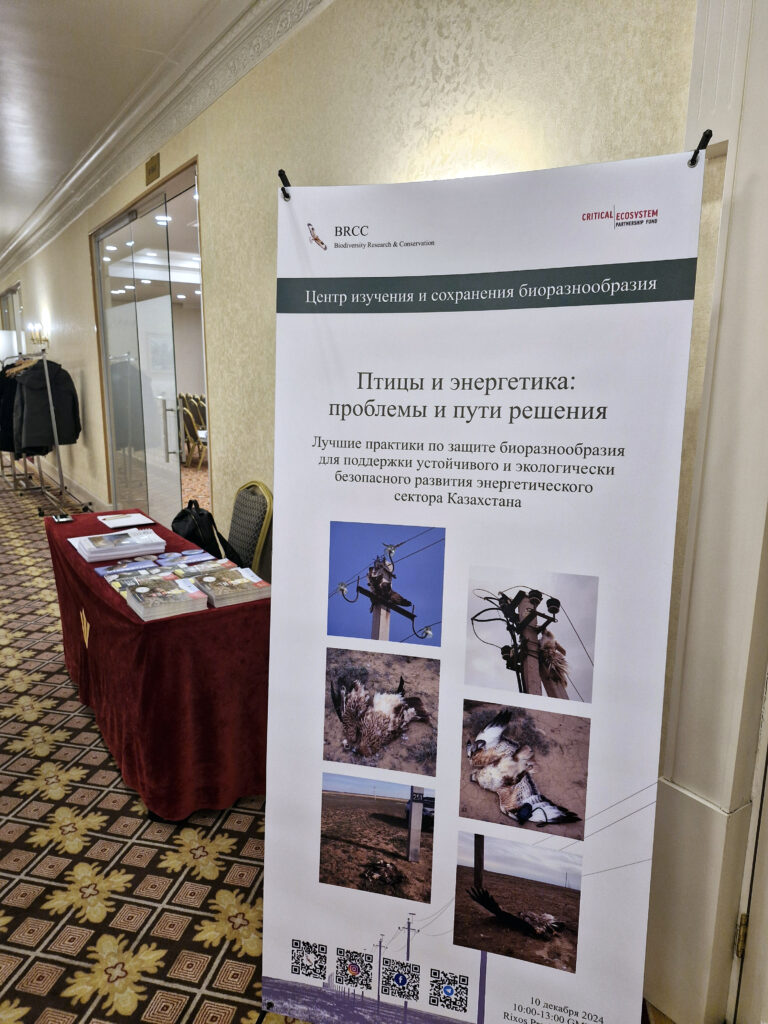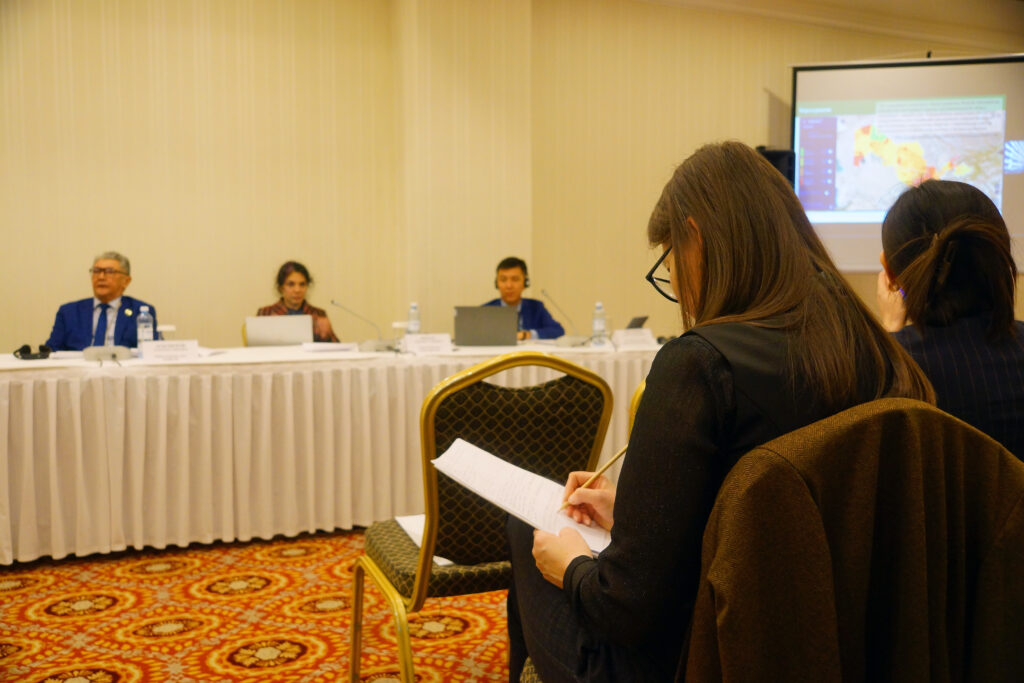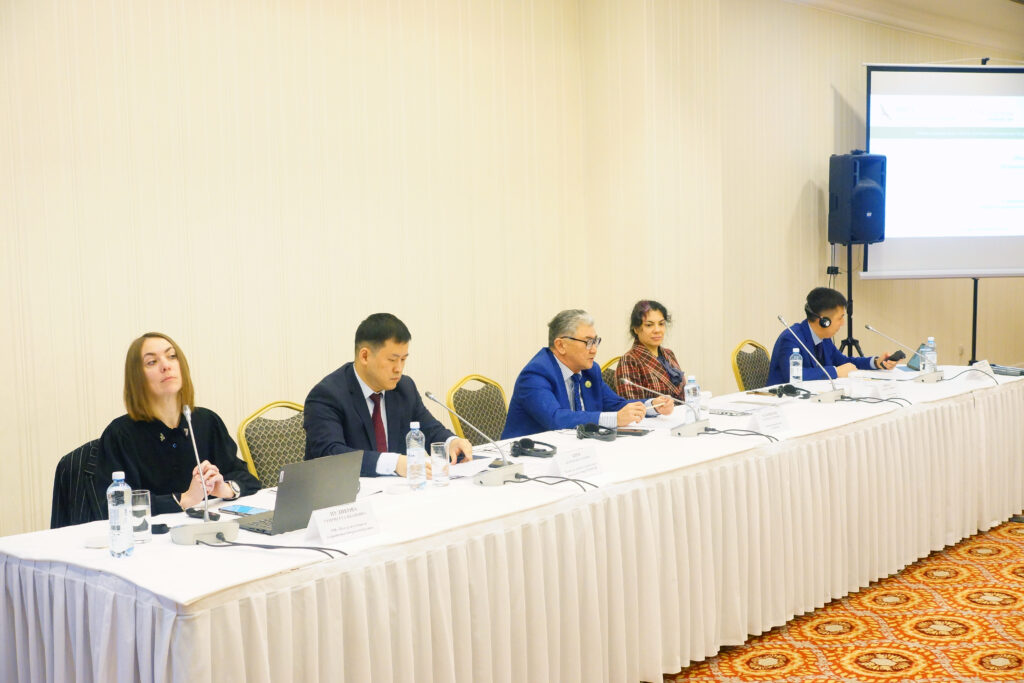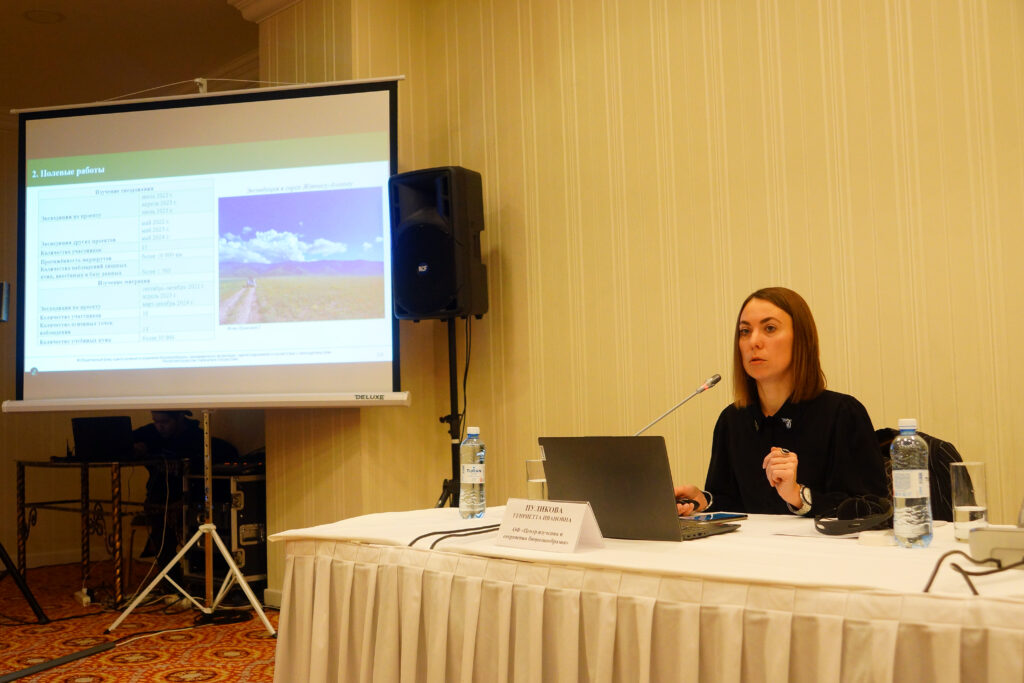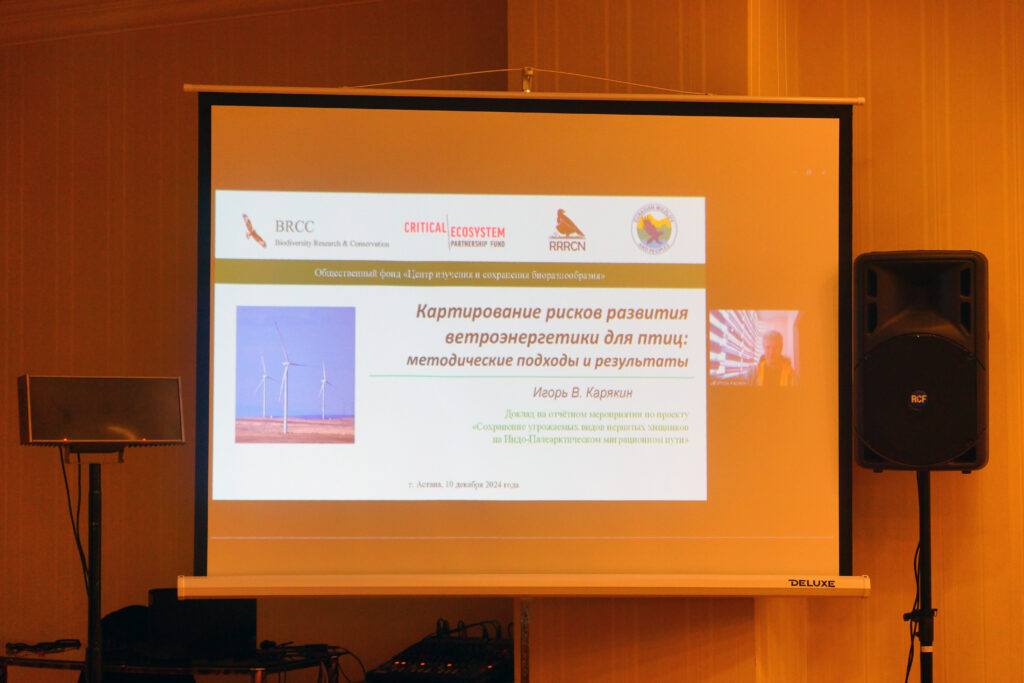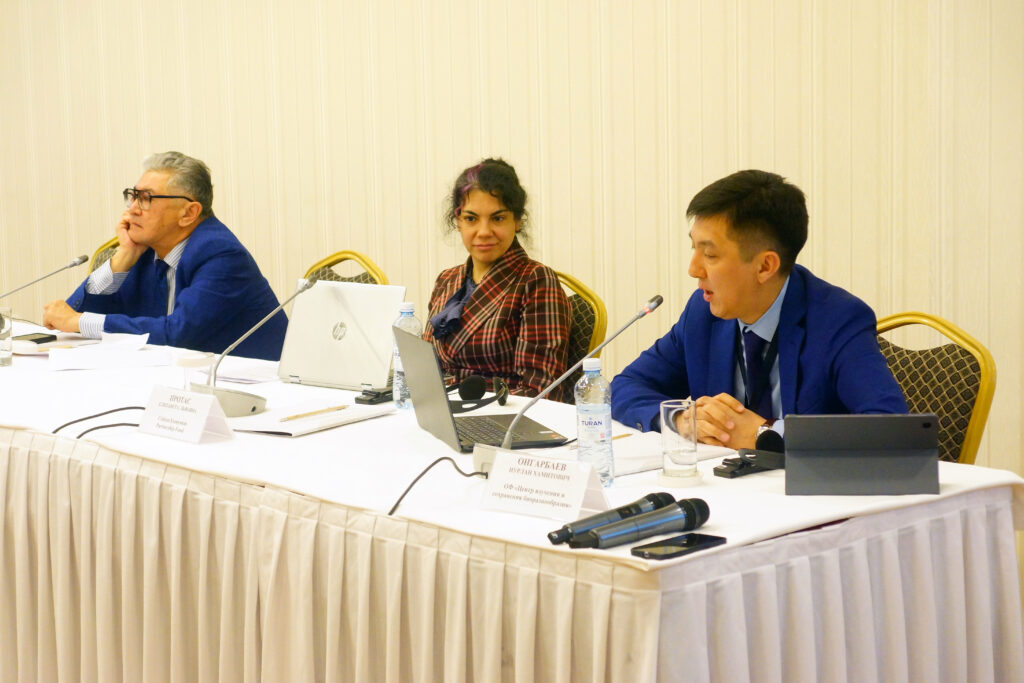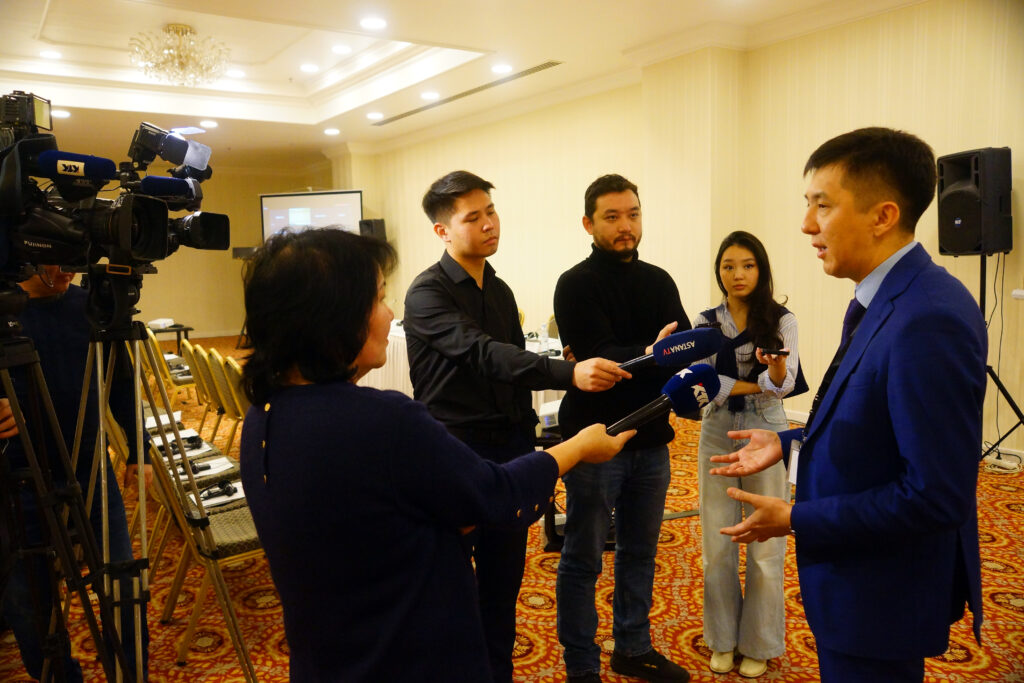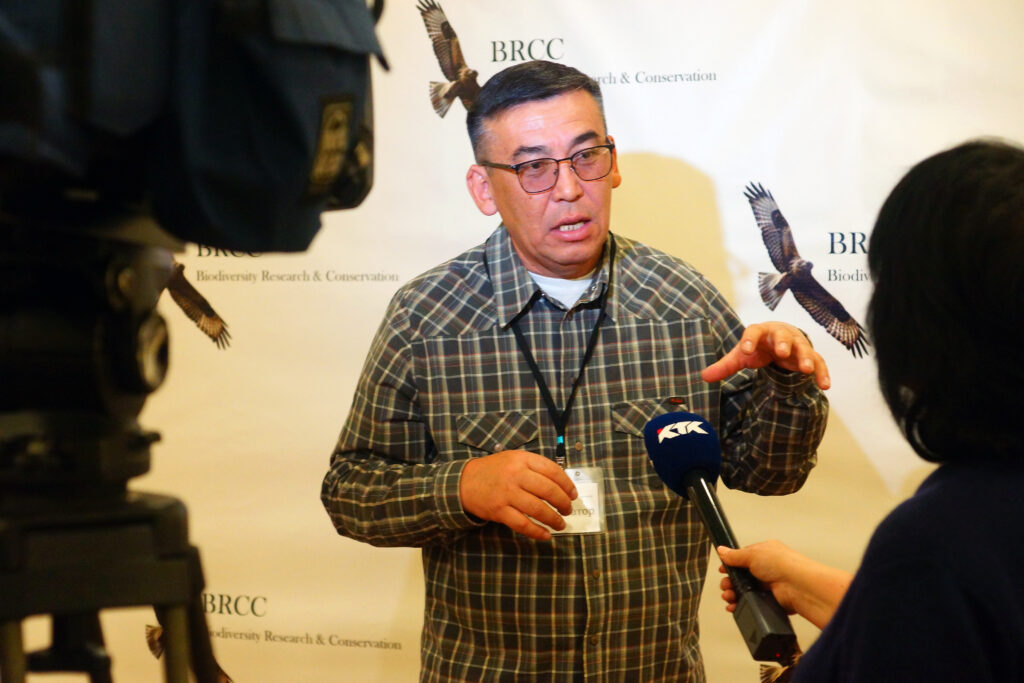Birds and energy: problems and solutions. BRCC team reported on the results of the project
On December 10, a reporting press conference "Birds and energy: problems and solutions" was held in Astana. This meeting summed up the results of the BRCC team's two-year work on the project for the conservation of endangered birds of prey on the Indo-Palearctic migratory flyway in Kazakhstan, carried out with the support of CEPF.
Representatives of regional power grid companies, wind farms, specialized committees and departments of the Ministry of Energy of the Republic of Kazakhstan and the Ministry of Ecology and Natural Resources of the Republic of Kazakhstan, representatives of environmental NGOs, as well as journalists of national mass media were invited to the event. The meeting was simultaneously held in online format.
The meeting was opened by Mr. Andrey Vitalievich Kim, Deputy Chairman of the Committee for Forestry and Wildlife of the Ministry of Ecology and Natural Resources of Kazakhstan, who addressed the participants with a welcoming speech and outlined the importance and relevance of the issues covered in this report meeting. Then the floor was given to Lizza Protas, representative of CEPF in Central Asia, who briefly introduced the participants to the activities of the fund and the projects supported by it. The meeting was moderated by Mr. Asylkhan Dairovich Asylbekov, Chairman of the Public Council of Ministry of Ecology and Natural Resources of Kazakhstan.
Bird deaths on power lines
According to studies, for every 10 km of 6-10 kV power lines in Kazakhstan, 9 birds of prey are killed annually, of which 1,68 are rare species listed in the Red Book. The total length of such dangerous power lines exceeds 80 thousand kilometers, and even the most approximate calculations show that the annual damage to the fauna of Kazakhstan is measured in hundreds of millions of tenge, and the ecological damage from the loss of populations of rare species may be irreparable. The most vulnerable are key species of birds of prey, such as eagles and falcons.
For reference: the amount of compensation for one dead golden eagle according to the order of the Ministry of Agriculture of the Republic of Kazakhstan is 400 minimum estimated value.
Risks to birds at wind farms (WPPs).
According to data published by the International Union for Conservation of Nature (IUCN), in South Africa and Canada, bird mortality at wind power plants (WPP) averages 4.6 and 8.2 birds per turbine per year, respectively. High rates of wind energy development in Kazakhstan make this problem for our republic especially urgent. Especially since many operating wind farms in Kazakhstan are located in migration corridors through which hundreds of thousands of migrating birds from Europe and Russia fly to winter and back.
For reference: Kazakhstan in 2005 joined the UN Convention on Migratory Species (Bonn Convention), within the framework of which it has obligations to take measures to conserve migratory species of wild animals.
During the press conference, the BRCC team gave detailed information about the problem of bird deaths at power facilities, familiarized participants with the results of their work on the project, presented examples of scientific approach, best practices and technical innovations in solving the problem.
Ornithologist Henrietta Pulikova spoke in general about the activities of the public foundation “Center for Biodiversity Research and Conservation”, after which she introduced the audience to the details of the project on the conservation of endangered birds of prey on the Indo-Palearctic migration flyway in Kazakhstan, as well as announced the results and outcomes of two years of research work.
Г. Пуликова. Обзор деятельности BRCC и основные результаты проекта (PDF)
Then the floor was given to an independent expert Igor Karyakin, who presented in an online format a unique for the territory of Kazakhstan software product developed under the project, which will allow the Ministry of Ecology and Natural Resources, power engineers and investors to map and assess the risks associated with the potential negative impact of electric power facilities on birds.
The final report of Nurlan Ongarbayev, BRCC Executive Director, was devoted to summarizing the results of the research, conclusions and recommendations to the state decision-making bodies in the field of biodiversity conservation, as well as some practical steps of the BRCC team in addressing the problems of bird deaths at power lines and power plants. Nurlan Ongarbayev emphasized the obligations of energy companies to comply with the norms and requirements of national environmental legislation, as well as the obligations of Kazakhstan within the framework of the UN conventions signed by it, in particular, the Bonn Convention on the Conservation of Migratory Species of Wild Animals.
Н. Онгарбаев. Птицы и энергетика проблемы и пути решения (PDF)
At the end of the report, BRCC staff were interviewed by several Kazakhstani news TV channels and answered questions from journalists.
In the final part of the report meeting, BRCC Executive Director Nurlan Ongarbayev read out the text of the appeal to the Government of the Republic of Kazakhstan with a request to ensure that local executive bodies clearly implement the issues of biodiversity conservation when reserving land; to accept the proposal of the Ministry of Ecology and Natural Resources on the issues of minimizing bird mortality at power facilities, to give appropriate instructions to the ministries of national economy, energy and others to make the necessary changes in the legislation; to instruct the Ministry of Environment and Natural Resources to develop solutions aimed at modernizing the national energy system.
Reporting links:
- The deaths of 30,000 birds annually: what our ornithologists propose to protect birds
- About 34 thousand birds die annually on power lines in Kazakhstan
- Domestic ornithologists suggested a solution to preserve birds
- More than 30 thousand birds die annually on power lines in Kazakhstan
- Kazakhstani scientists addressed the government of the country
- Scientists publicly read out their appeal to the government of Kazakhstan

